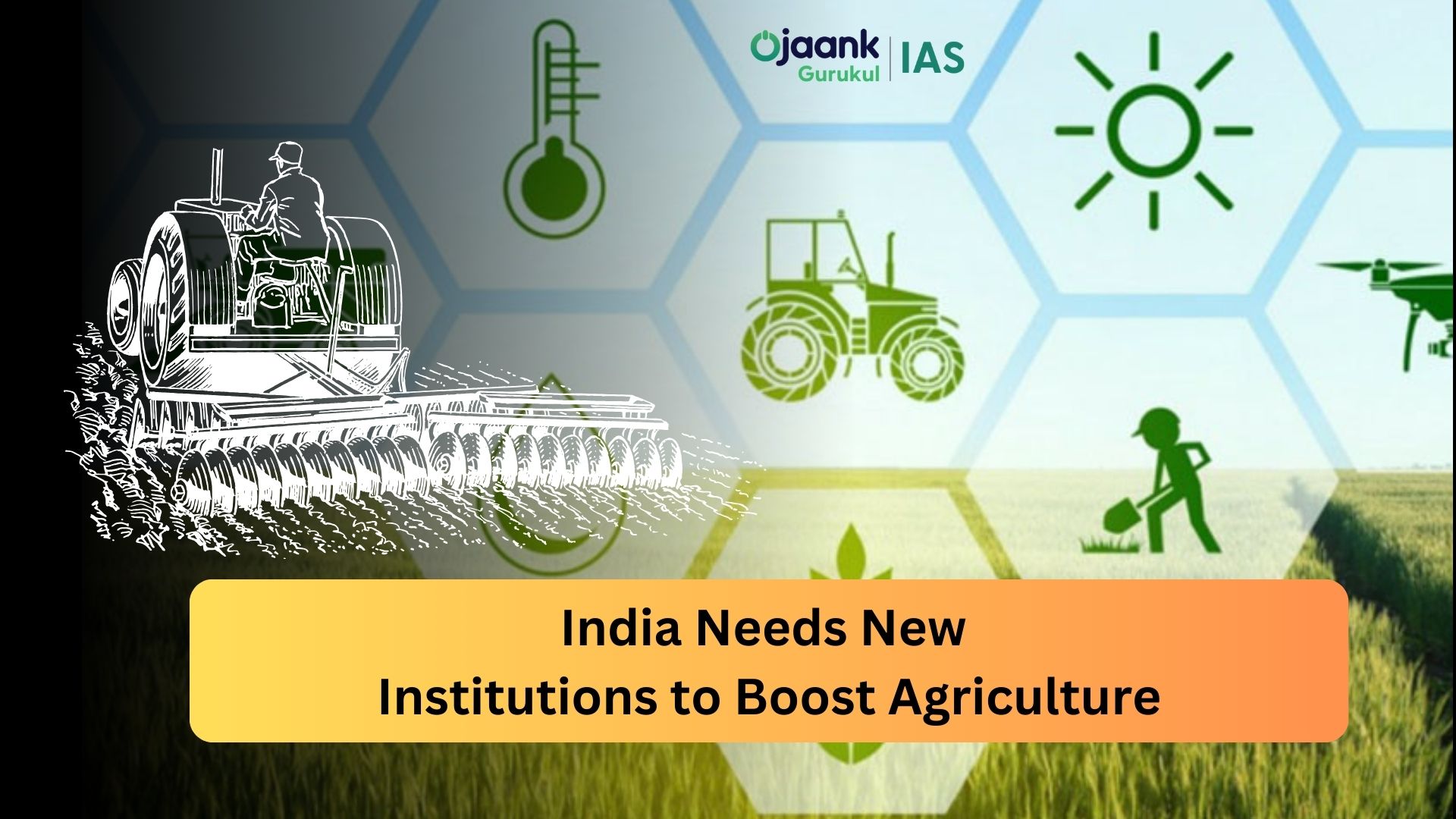India Needs New Institutions to Boost Agriculture | Unlocking Agri-Potential

Introduction
India’s agriculture sector, a cornerstone of its economy, is ripe for transformation.
Despite remarkable growth over the decades—expanding from a GDP contribution of $25 billion in the 1970s to over $630 billion by 2024—India still lags behind its potential in agricultural productivity and global competitiveness.
With 45% of the workforce engaged in agriculture and an 18% contribution to GDP, the sector holds immense untapped promise.
This blog explores why new institutions are vital to bridge these gaps and unlock the full potential of Indian agriculture.
Success Stories in Indian Agriculture
India has witnessed transformative milestones:
- Green Revolution: Achieved food self-sufficiency.
- White Revolution: Made India the largest producer of milk.
- Horticulture Boom: Positioned India as a leader in fruit and vegetable production.
- Agritech Startups: Over 1,000 startups emerged between 2013–2020, revolutionizing farming practices.
These successes are anchored in institutions like ICAR, Food Corporation of India, NABARD, and AMUL, which have driven growth through innovation and infrastructure.
Challenges Hindering Agricultural Growth
Despite these achievements, India faces persistent challenges:
- Low Productivity: India's paddy yield of 3,878 kg/ha is far behind the global best of 10,386 kg/ha.
- Supply Chain Inefficiencies: Poor infrastructure hinders market access and leads to post-harvest losses.
- Climate Change: Erratic weather patterns affect yields.
- Global Price Volatility: Unstable prices impact export profitability.
- Untapped Agri-Tech Potential: India’s agri-tech market has only 1.5% penetration despite a valuation of $24 billion.
The Need for New Institutions
To overcome these hurdles, India requires institutions tailored to the modern agricultural ecosystem:
- Indian Agriculture Council: Similar to the GST Council, it can drive coordinated policy interventions across states.
- Farmer Producer Organizations (FPOs): Enable collective bargaining and better market access.
- Centers of Excellence: Foster crop-specific R&D and training.
- Public-Private Partnerships: Leverage AI, IoT, and remote sensing for sustainable agriculture.
- Global Export Institutions: Connect farmers with international markets to enhance export competitiveness.
Key Drivers for Agricultural Export Growth
India has significant export potential due to:
- Diverse Agro-Ecological Zones: Supports a wide variety of crops.
- Rising Global Demand: Growing population and dietary changes create opportunities.
- Technological Advancements: Agri-tech innovations boost productivity and quality.
- Government Initiatives: Policies like the Agriculture Export Policy aim to double exports from $30 billion to $60 billion.
Top Export Opportunities
- Rice: Contributes over 20% of agricultural exports.
- Marine Products: Valued at $8.07 billion in 2022–23.
- Fruits and Vegetables: High potential in grapes, bananas, and processed products.
- Value-Added Products: Organic and processed foods are gaining global traction.
The Role of National Cooperative Export Limited (NCEL)
The NCEL is a game-changer, addressing challenges and unlocking export potential:
- Aggregation of Produce: Pooling resources for economies of scale.
- Quality Control: Meeting international standards.
- Market Intelligence: Providing insights into global demand and trends.
- Capacity Building: Training cooperatives in export procedures.
- Infrastructure Development: Building export-focused warehouses and cold chains.
- Technology Adoption: Promoting agri-tech among cooperatives.
Impact of NCEL
- Farmer Income: Increase by 25–35% through better price realization.
- Export Growth: Drive agricultural exports beyond $60 billion.
- Rural Development: Create jobs and reduce urban-rural disparity.
- Sustainable Agriculture: Promote eco-friendly practices.
Agricultural Reforms for Sustained Growth
To achieve these objectives, reforms are critical:
- Modernize agricultural marketing systems.
- Improve supply chain efficiency.
- Enhance access to credit and insurance.
- Encourage private-sector investments.
- Promote sustainable farming practices.
The government’s “Whole of the Government” approach, spearheaded by Prime Minister Narendra Modi, aligns various programs and policies to boost the agricultural sector.